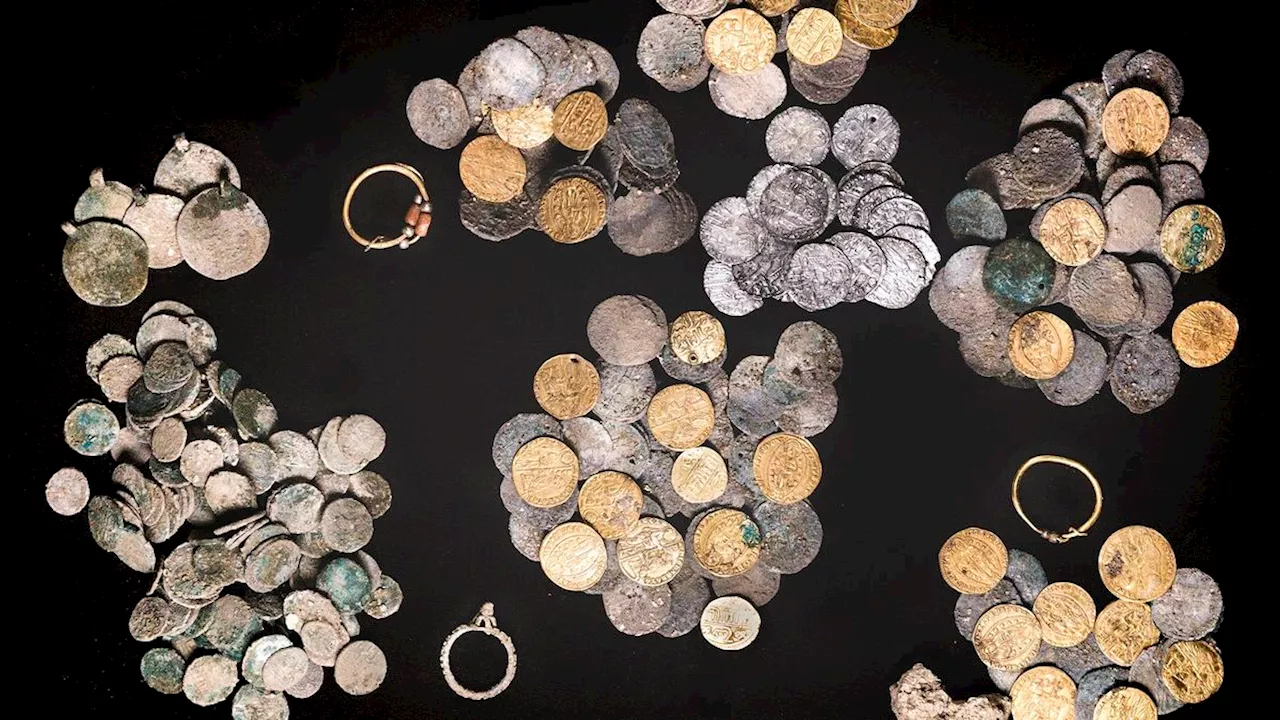Archaeologists in Israel have stumbled upon a significant collection of gold and silver coins dating back to the 15th century, hidden near the remains of an ancient synagogue. The discovery offers valuable insights into medieval trade and cultural exchange in the region.
Archaeologists have unearthed a treasure trove of gold and silver coins near the ruins of a centuries-old synagogue in Israel , situated by the Sea of Galilee. The discovery, made at the archaeological site of Huqoq (also known as Yaquq), consists of 364 coins dating back to the 15th century. The coins were found within two earthenware jugs positioned beneath the collapsed wall of the synagogue.
The majority of the coins originate from medieval Venice or the Mamluk sultanate, which held dominion over the region during that era. The precise reason for the jugs containing these coins and their subsequent placement at the site remains shrouded in mystery. Dr. Kenneth Kool, a curator in the Israel Antiquities Authority's coin department, shed light on the findings in a paper published in the latest issue of the journal. He revealed that the earliest Venetian coins date back to the reign of Francesco Dandolo, the doge (leader) of Venice, between 1329 and 1339. The latest Venetian coins trace back to the period of Francesco Foscari, who reigned from 1423 to 1457. Many of the Venetian coins bear depictions of St. Mark the Evangelist, traditionally credited as the author of the Gospel of Mark, alongside Latin inscriptions that translate to 'It is to You, Christ, that this Duchy is entrusted which You govern,' according to Kool.During the Middle Ages in the eastern Mediterranean, Venetian coins were widely prevalent as an export currency. 'By the end of the fourteenth century ducats were the only European gold currency accepted in Mamluk Egypt and Syria,' stated Kool in his study. The majority of the Mamluk coins discovered in the hoard were minted during the reign of Sultan al-Ashraf Barsbay, from 1422 to 1438, as noted by Kool. The hoard also includes a few coins from other regions in Southern Europe, such as a silver coin minted during the reign of James I, who ruled Sicily from 1285 to 1295, and even a coin from Serbia. The 'deposition of the hoard occurred sometime during or after 1438-1457,' a timeframe deduced from the analysis of the coins and other archaeological remains, Kool wrote in the paper. The identity of the individual or group who deposited the hoard, the source of their wealth, and the motivation behind leaving it at the synagogue remain unknown.However, several possibilities have been proposed. It could have been money donated for synagogue repairs, or perhaps a traveling merchant deposited the hoard for safekeeping and never returned. Another theory suggests the coins were left by pilgrims journeying to the tomb of Habakkuk, a prophet mentioned in the Hebrew Bible who resided in the 7th century B.C. This tomb is situated near Huqoq. The building ceased being used as a synagogue in the mid-15th century, according to Kool. Subsequently, the structure fell into disrepair. The hoard was discovered in the summer of 2018, but its unveiling was delayed due to concerns about looting. Professor Brien Cunningham-Parker, a professor of religious studies at the University of North Carolina at Chapel Hill who led the team responsible for the discovery but was not an author of the new study, informed Live Science via email
Archaeology Archaeology Coins Medieval Synagogue Israel History Sea Of Galilee
United States Latest News, United States Headlines
Similar News:You can also read news stories similar to this one that we have collected from other news sources.
 Ancient Roman Gold Coin Hoard Unearthed in LuxembourgArchaeologists in Luxembourg have discovered a trove of 141 gold Roman coins dating back to the 4th century, including the marks of nine emperors. The find, located near a fortified tower, provides unique insights into the economic and political climate of the late Roman Empire.
Ancient Roman Gold Coin Hoard Unearthed in LuxembourgArchaeologists in Luxembourg have discovered a trove of 141 gold Roman coins dating back to the 4th century, including the marks of nine emperors. The find, located near a fortified tower, provides unique insights into the economic and political climate of the late Roman Empire.
Read more »
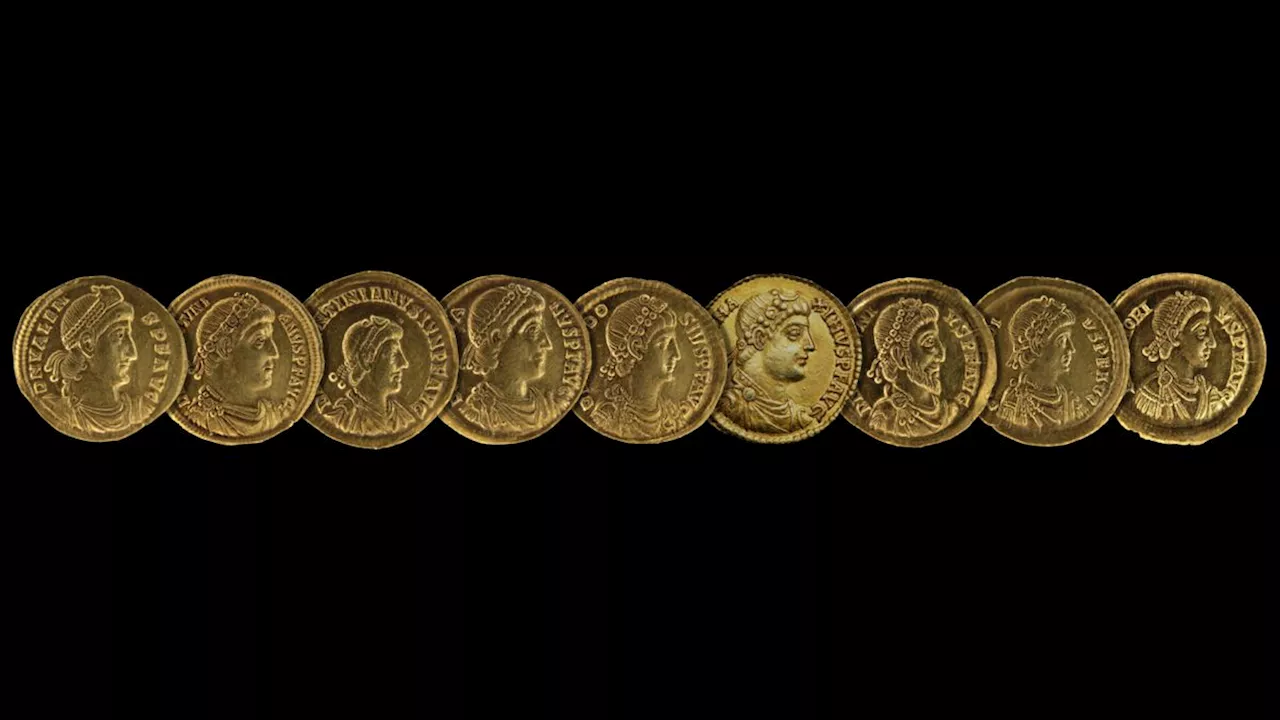 1,700-Year-Old Roman Gold Coin Hoard Unearthed in LuxembourgA team of archaeologists in Luxembourg has uncovered a significant hoard of Roman gold coins dating back to the 4th and 5th centuries AD. The find, which includes coins featuring portraits of various emperors, including the short-lived usurper Eugenius, is considered a major archaeological discovery due to its historical value and the opportunity to study an entire ancient monetary deposit in context.
1,700-Year-Old Roman Gold Coin Hoard Unearthed in LuxembourgA team of archaeologists in Luxembourg has uncovered a significant hoard of Roman gold coins dating back to the 4th and 5th centuries AD. The find, which includes coins featuring portraits of various emperors, including the short-lived usurper Eugenius, is considered a major archaeological discovery due to its historical value and the opportunity to study an entire ancient monetary deposit in context.
Read more »
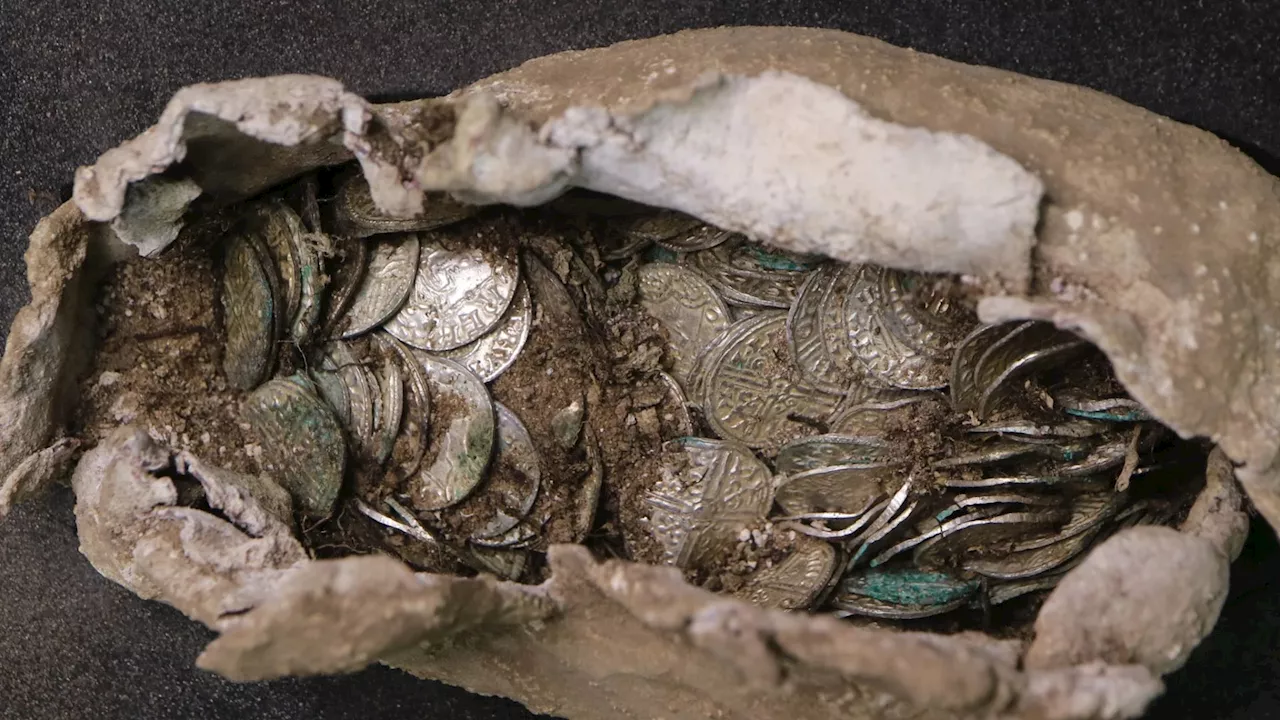 11th-Century Coin Hoard Unearthed in SuffolkArchaeologists in Suffolk have uncovered a significant hoard of 11th-century coins, offering valuable insights into the region's history and political climate.
11th-Century Coin Hoard Unearthed in SuffolkArchaeologists in Suffolk have uncovered a significant hoard of 11th-century coins, offering valuable insights into the region's history and political climate.
Read more »
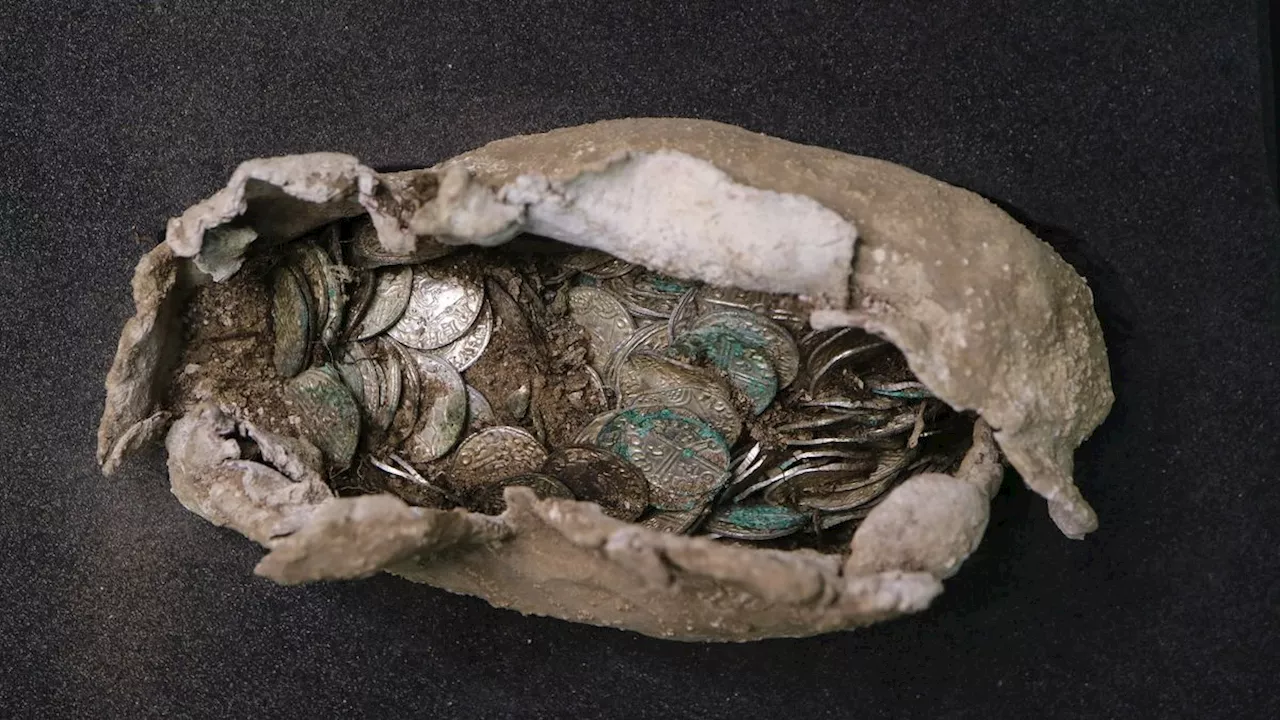 Rare Anglo-Saxon Coin Hoard Unearthed in EnglandA hoard of 321 silver coins dating back to the reign of Edward the Confessor has been discovered in England, providing valuable insights into the turbulent period of Anglo-Saxon history.
Rare Anglo-Saxon Coin Hoard Unearthed in EnglandA hoard of 321 silver coins dating back to the reign of Edward the Confessor has been discovered in England, providing valuable insights into the turbulent period of Anglo-Saxon history.
Read more »
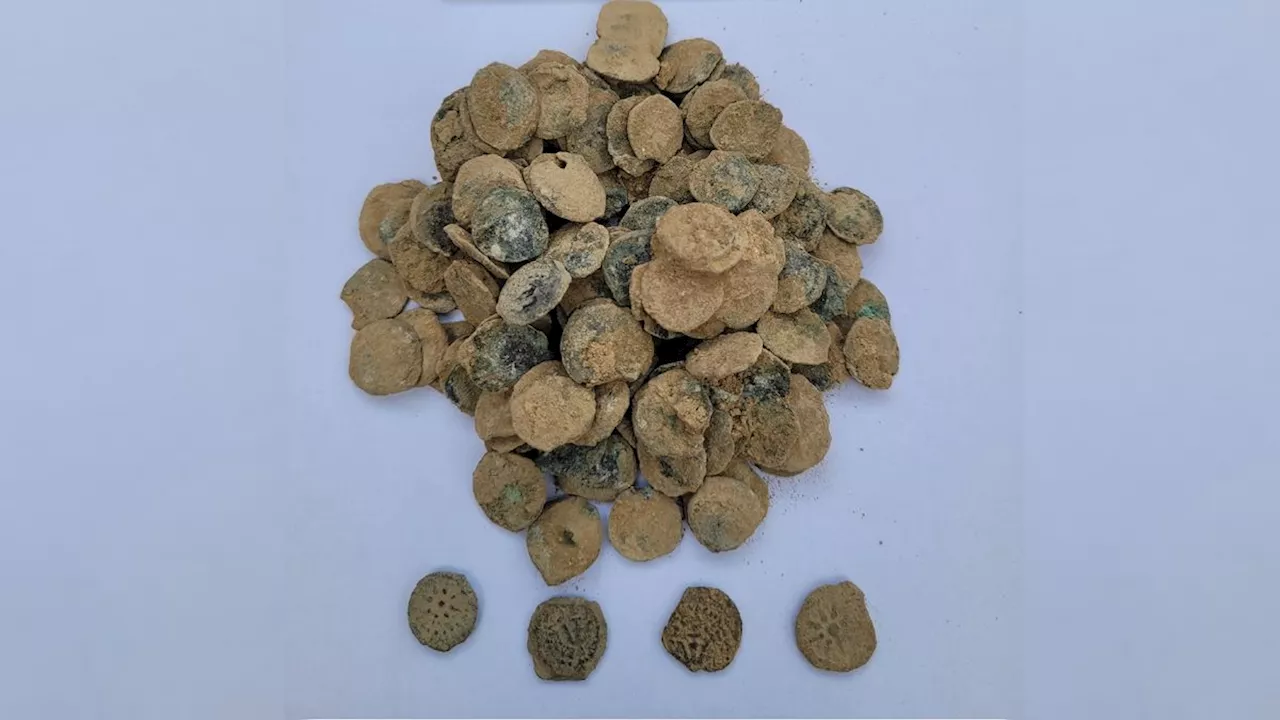 2,100-Year-Old Coin Hoard Unearthed in Jordan ValleyA rare hoard of 160 coins dating back to the reign of Alexander Jannaeus, a Jewish king, has been discovered in the Jordan Valley. The coins, minted around 80-79 B.C., provide valuable insights into the Hasmonean dynasty.
2,100-Year-Old Coin Hoard Unearthed in Jordan ValleyA rare hoard of 160 coins dating back to the reign of Alexander Jannaeus, a Jewish king, has been discovered in the Jordan Valley. The coins, minted around 80-79 B.C., provide valuable insights into the Hasmonean dynasty.
Read more »
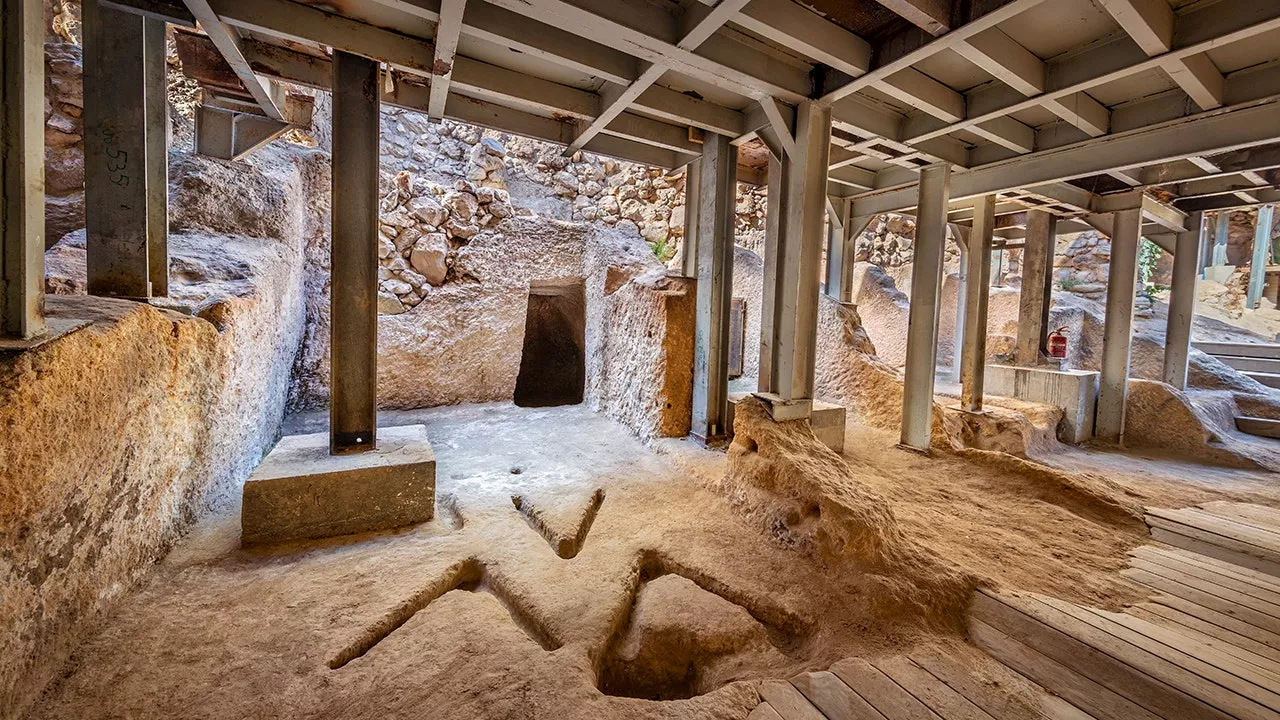 Ancient Ritual Site Dating Back to First Temple Period Unearthed in JerusalemArchaeologists have uncovered a well-preserved ancient structure believed to have been used for ritual practices during the First Temple period in Jerusalem. The site, located in the City of David, features eight rooms containing an altar, a standing stone, an oil press, and a wine press, providing insights into the religious practices of ancient Judah.
Ancient Ritual Site Dating Back to First Temple Period Unearthed in JerusalemArchaeologists have uncovered a well-preserved ancient structure believed to have been used for ritual practices during the First Temple period in Jerusalem. The site, located in the City of David, features eight rooms containing an altar, a standing stone, an oil press, and a wine press, providing insights into the religious practices of ancient Judah.
Read more »
